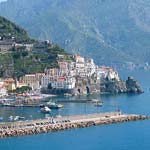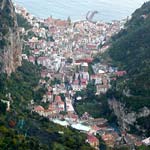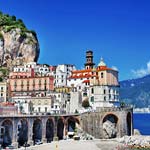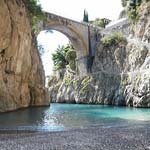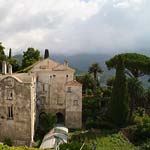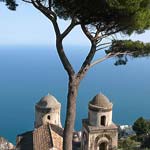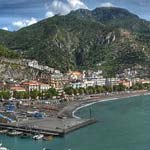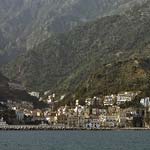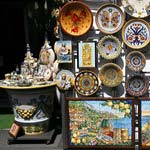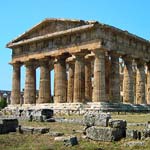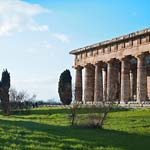Maresca Hotel Praiano - Amalfi Coast
- Versione italiana
English version

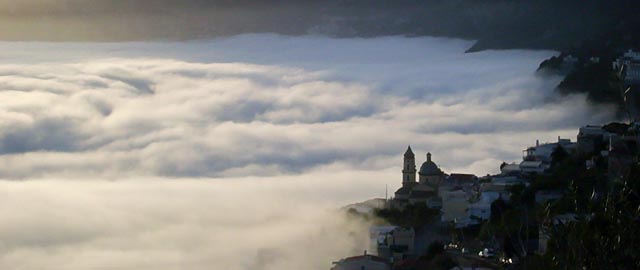
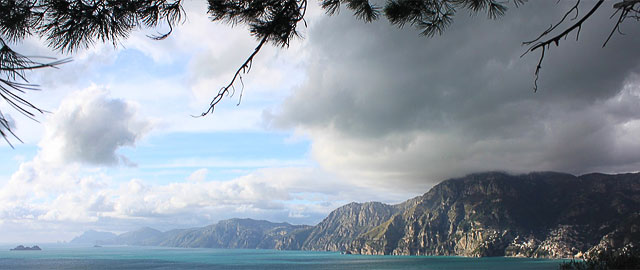
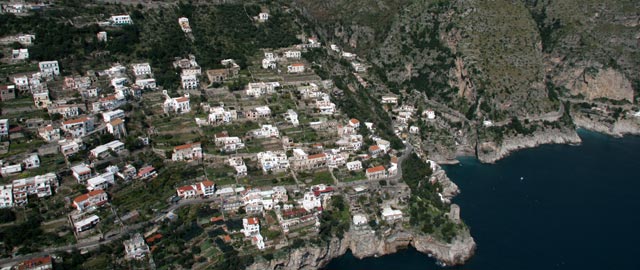
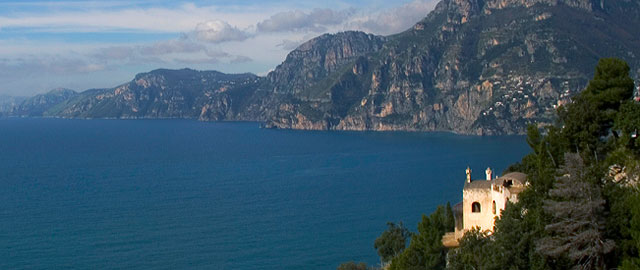
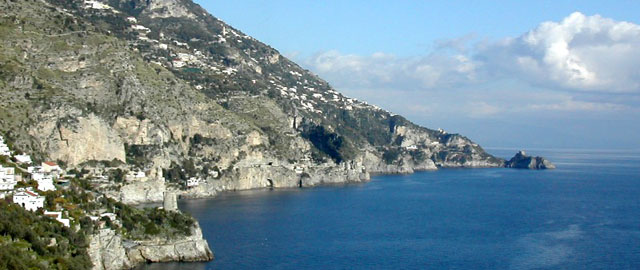
BOOK ON-LINE!
Book Soon, Pay Less!!! 
Our rates are dynamic and based on the daily request, can vary.
Itineraries from hotel Maresca
Places to visit and enjoy during your stay.
The Amalfi Coast is one of the most breathtaking places on earth. With narrow roads and hairpin turns amid rocky cliffs plunging to the sea, it is the division between two of the most beautiful gulfs in Italy. A unique place that combines natural beauty with a rich and fascinating history, it is a place you will never forget.
In this little guide, we will give you recommendations of excursions to some of the most interesting and beautiful places to visit during your stay in Praiano.
From the Hotel Maresca in Praiano going east (Amalfi, Atrani, Ravello, Scala, Minori, Maiori, Cetara, Vietri sul Mare, Paestum).
Amalfi
Amalfi 9 km, 20 min by bus, 15 min by car.
Amalfi was the first of the four ancient maritime republics in Italy and was for many centuries an independent and prosperous trading port. The Tavola Amalfitana, a code of maritime laws providing standards for navigation and commerce, was created in Amalfi and adopted by most medieval kingdoms around the Mediterranean. They can be seen today in the Museo Civico. The Duomo di San Andrea with the adjoining Chiostro del Paradiso brings to light the wealth and influence of Amalfi during its golden age. The crypt below the Duomo house the remains of St. Andrew.
Atrani
5 min by foot from Amalfi
The smallest county, in Italy lies in the shadow of the more important and influencial Amalfi. The church of San Salvatore de Birecto, with its remarkable bronze door circa 1087, was the location for the coronation of the Amalfi doges, the powerful chief magistrates and leaders of the town.
Ravello
8 km from Amalfi, 20 min by bus from Amalfi, 15 min by car from Amalfi, 1 hour by foot from Atrani.
Perched high above Amalfi on the ridge of a mountain, Ravello is in the words of a French writer, "closer to the sky than to the sea." One of the most beautiful towns in all of Italy, Ravello was home to the wealthy nobles of Amalfi. Today, thanks to its privileged position, it is one of the most popular tourist destinations on the Amalfi Coast. Ravello has attracted the rich and famous for centuries. Notable visitors include Greta Garbo, Winston Churchill, Barbara Streisand, and Steve Jobs. Wagner visited in 1880 and the lush gardens of the 13th century Villa Rufolo were his inspiration for Klingsor's Garden in the opera "Parsifal." Classical music concerts are performed here today. Villa Cimbrone is Ravello's show stopper. 1,500 feet above the sea, the magnificent gardens are some of the most beautiful in Italy. Be sure to see the Belvedere of Infinity, a breathtaking spot that overlooks the entire Bay of Salerno.
Scala
Only 2.5 Kim's from Ravello, Scala is one of the most ancient places on the Amalfi coast. It was a fortified town protecting the Amalfi Maritime Republic. See the beautiful crucifix in the crypt of the Duomo di San Lorenzo. Scala is also famous for its chestnuts.
Minori
Minori (3 km east of Amalfi) with its web of small streets is famous for its lemons, considered to be some of the best on the coast. There is also a first century roman villa.
Maiori
Maiori (6 km east of Amalfi) has the largest beach on the Amalfi Coast. It is a popular resort with the Italians. The wide seaside promenade is a lovey place to walk.
Cetara
Cetara (15 km east of Amalfi) is a picturesque fishing village. It has been an important fishing port since Roman times, and continues to be the main fishing port in the region. Famous for tuna, anchovies, and colatura d'alici (a condiment made from anchovies, similar to Garum used by the ancient Romans).
Vietri sul Mare
Vietri sul Mare (5 km west of Salerno) is the western entrance to the Amalfi Coast. Famous for its handmade ceramic, the streets are filled with shops selling the products locally made. In fact, the ceramic tiles in Hotel Maresca were all made in Vietri!
Paestum
Paestum (35 km south of Salerno) houses the celebrated ruins of three Greek temples: Basilica, Nettuno e Hera. The temples are in remarkably good condition. Paestum is also famous for its buffalo mozzarella.
From the Hotel Maresca in Praiano going west (Positano, Li Galli, Sant’Agata dei due Golfi, Sorrento)
Positano
7 km, 15 min by bus, 10 min by car.
Positano defies gravity, clinging to the side of the mountains as if by magic. It is a confusion of tiny winding streets, steep staircases, arches, houses, hotels... hanging precipitously to Monti Lattari. A haven for artists and writers, Positano has become an international tourist destination in the last century, especially in the last 50 years.
Enjoy strolling along the streets filled with boutiques of “la Moda Positano” (Positano style) and charming bars and restaurants lining the beaches. The views all over town are spectacular.
Li Galli
6 miles.
Off the coast of Positano you can see a cluster of three small islands (Gallo Lungo, Castelluccio, and Rotonda) known as “Li Galli”, which means “The Roosters”. According to legend, these islands were inhabited by sirens who seduced sailors with their beautiful songs, causing them to be distracted and crash into the rocks. In Homer's Odyssey, Odysseus had his crew block their ears with wax and tie his leg to a mast so he could not be lured by the Siren's song.
In more recent times, the islands have been privately owned. In 1988, the Russian dancer Rudolf Nureyev made his home here. It is currently owned by a Sorrento hotelier, and available for rent at €500,00 per month!
Sorrento
25 km, 80 min by bus, 60 min by car.
Above Positano the SS163 splits, with both roads taking you to Sorrento. If you follow the road to the right, it takes you directly to the center of Sorrento, or to the A3 (Napoli-Salerno). If you instead go to the left at the split, you will follow a well known road, il Nasto Azzurro. This lovely roads climbs into the hills around Sorrento, crossing through a number of little towns. At the top you arrive at Sant'Agata sui Due Golfi, the highest point in the area affording magnificent views of both the Gulf of Naples and the Gulf of Salerno. The Belvedere del Deserto is a vista point at a monastery once famous as a stopping point for travelers on the Grand Tour of Europe. Famous visitors include Goethe, Nietzche, Wagner and Stendhal.
Undeniably one of the most beautiful panoramas in the area, you can see both gulfs as well as Capri, Ischia and Procida. Today the monastery is run by the order of Benedictine nuns. The Belvedere is open to all, but as it is in a monastery, proper attire is required.
As you leave this area, the road becomes known as the Nastro Verde. You descend to Sorrento between Massa Lubrense (don't miss the Annunziata and the lovely view) and Capo di Sorrento where you can visit the ancient Roman ruins of the Villa di Pollio Felice and Queen Giovanna's Bath. Finally you arrive in Sorrento with its enviable position overhanging the sea and offering panorama of the entire Gulf of Napoli. The historic center is a warren of small streets and alleys where you will find the famous inlaid wood artisans, coral jewelry artisans and cameo makers.
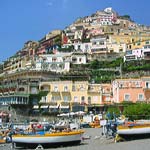 Positano
Positano
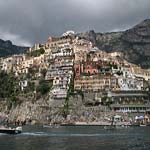 Positano
Positano
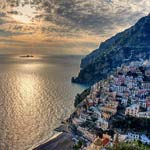 Positano
Positano
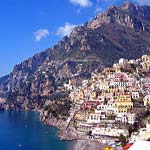 Positano
Positano
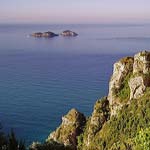 Li Galli
Li Galli
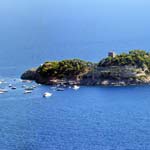 Li Galli
Li Galli
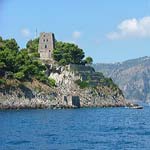 Li Galli
Li Galli
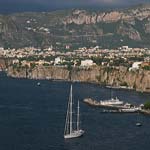 Sorrento
Sorrento
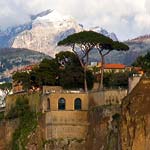 Sorrento
Sorrento
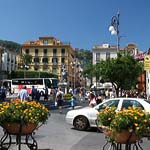 Sorrento
Sorrento
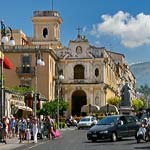 Sorrento
Sorrento
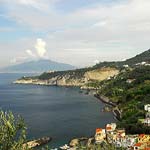 Sorrento
Sorrento
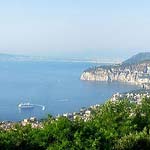 Sorrento
Sorrento
Discovering the Gulf of Naples
Neaples
Estimated time: minimum one day
Naples is an ancient city, once the capital of the Kingdom of the Two Sicilies and the Kingdom of Naples for many centuries.
The historic center is rich in historic monuments and beautiful churches. Here we will list only the most important ones for you to see.
The National Archaeological Museum of Naples represent one of the main cultural attractions of the city. Thanks to the excavations of Pompei, Herculaneum and other archaeological sites, you will find one of the largest collections of frescoes, mosaics, armory and statue of the imperial period, including those of the Farnese Collection.
Il Chiostro di Santa Chiara with its Capodimonte majolica entirely covering the benches and columns.
San Domenico Maggiore, in one of Naples' most beautiful squares, is important for both the Baroque and Gothic periods.
La Capella di Sansevero houses the incredible “Veiled Christ” carved out of marble with the veil appearing transparent.
San Lorenzo Maggiore famous for its Gothic nave off which open several chapels containing numerous paintings and priceless objects of art.
Duomo di San Gennaro (Duomo di Santa Maria Assunta) was built in the 13th century and throughout the years has undergone numerous changes incorporating many styles from paleochristian to baroque. It is most certainly the city's most important religious site, as it houses the chapel of San Gennaro, Parton Saint of Naples. Here you will find the reliquaries containing his blood and skull.
La Certosa di San Martino is a baroque church with an attached cloister. The important Museum of San Martino (open from 8:30 am-7:00 pm closed Mondays) contains a famous collection of Napolitan nativity scenes beautifully hand carved and decorated in the 15th and 16th centuries.
A short distance away you will find the famous Teatro San Carlo, the largest opera house in Italy and one of the most important in the world.
It is not possible in one short day to visit all the museums, churches and monuments described above.
If you want to spend a day in Naples, we suggest that you select one of the churches and one museum from the list above and spend the morning enjoying them. After a mouthwatering pizza for lunch, spend the rest of the day walking around the area of the Spaccanapoli (via San Biagio dei Librai).
The Island of Ischia
24 miles.
The beautiful island of Ischia, nicknamed the Green Island due to its luscious vegetation, is famous for its mineral hot springs and therapeutic mud used by over a hundred spas on the island. Ischia also produces some very good wines.
The Island of Capri
12 miles 50/60 minutes by boat (day trip)
If Ischia has earned the nickname Green Island, Capri owns the title of the Blue (or Azzure) Island because of the magnificent blue color of the crystal clear water surrounding it. Leaving from Praiano, it is possible to make a day trip to this lovely little island that in Roman times was home to the grand Emperor Augustus. Later Capri became the center of the Roman Empire when Tiberius built several villas around the island and refused to ever return to Rome! In the 1960's it was the “in” place for the rich and famous including Jacqueline Onassis and Bridget Bardot. Today Capri continues to be one of the most sought after destinations in the world.
To best enjoy the island we suggest you disembark at either Marina Grande or Marina Piccola and take the local bus or a taxi to Anacapri. (Almost everyone goes to Capri town first, then to Anacapri. This way you leave behind the hundreds of tourists headed straight to Capri town).
In Anacapri you will find a chairlift linking the town with Monte Solaro, where you will have an incredible view of the surrounding areas. To your left is the entire Gulf of Naples, from Sorrento to Ischia, with Mount Vesuvius dominating the center of the panorama. To your right you can see the Gulf of Salerno and the Amalfi Coast, all the way to Punta Licosa. The most adventurous will choose to take the walking path to Monte Solaro that leaves from the belvedere della Migliara. You are guaranteed to be rewarded with the most spectacular views nature has to offer!
When you return to Anacapri, don't miss the Church of San Michele with the beautiful majolica floor depicting the Garden of Eden. Interestingly, the artist had never seen exotic animals, so he used his imagination. Not far from the church is the Villa San Michele constructed by the Swedish doctor/author, Axel Munthe. Now head down to Capri town crossing through the famous Piazzeta leading to Via Camerelle, then Via Tragara until you come to the view of the beautiful Faraglioni rocks. At this point, if you have strong legs you can continue along the little road to the natural arch and then to the Piazzetta.
With this itinerary you are sure to enjoy Capri. Although we have left out Via Krupp, Villa Jovis, the gardens of Augustus, the Blue Grotto, etc, etc, you can fill any remaining time seeing whatever you choose.
Vesuvius
For all the scenarios and predictions formulated by science, a volcano decides when it will awaken! Vesuvius is an active volcano, the last eruption occurring in 1947 when smoke came out of the crater, then eventually stopped. The eruption that destroyed Pompeii occurred in 79 AD, but in reality an eruption could happen again at any time.
Founded in 1845 by Ferdinando II of Bourbon, the Vesuvius Observatory is the oldest volcanic observatory in the world. Over the years it has provided volumes of information that have advanced the understanding of volcanoes. It is manned 24 hours a day, and records any movement, trying to predict future eruptions.
Vesuvius became a national park area in 1979. Within the protected areas of the park, there are numerous nature walks that merit a visit. A trip to the summit of the volcano is most interesting. The road ends a kilometer from the top, and from this point you must continue by foot. There is no vegetation, only lava rock and pumice, creating an eerily strange but fascinating scene. The diameter of the crater is about 600 meters, the "cork" rests about 200 meters below inside the rim. You can still see some smoke and fumes coming out of it.
The fertile soil of the terrain surrounding Vesuvius is well known for the cultivation of fruits and vegetables, from cherry tomatoes to sweet Somma Vesuviana peaches to the famous Lacryma Christi (tears of Christ) wines.
Pompeii
Buried under volcanic ash in 79 AD during one of the most devastating volcanic eruptions in history, Pompeii is a splendid example of a city during this period. In the excavated areas you can find the ruins of Roman baths, the Basilica (the city's law courts and economic center), the Temple of Jupiter, and the Stabian Roman Baths. The House of Vettii is the best example of a lavishly decorated wealthy merchant's home, and the Villa of the Mysteries contains stunning frescos that retain their vibrant red and orange color.
NOTE: The majority of objects, statues, majolica and frescos excavated in the areas around Vesuvius can be seen in the Archeological Museum of Naples.
Ercolano (Herculaneum)
Ercolano was also destroyed by the eruption of Vesuvius in 79 AD, but unlike Pompeii, it was covered by a mass of volcanic mud which sealed and preserved wood and other organic materials. What remains are remarkably well preserved Roman baths, a theater, and a series of villas with splendid frescos, mosaics and columns.
Oplonti
A splendid villa, supposedly belonging to Nero's second wife Poppaea Sabina, covers over 75,000 square feet of excavated area (more lies under a road which will probably never be cleared). The villa is beautifully preserved and contains frescos so fresh they look new.
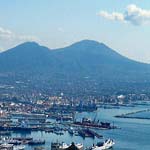 Napoli, vista del Vesuvio
Napoli, vista del Vesuvio
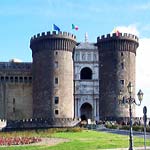 Napoli, Maschio Angioino
Napoli, Maschio Angioino
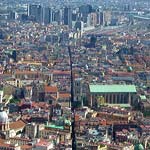 Spaccanapoli
Spaccanapoli
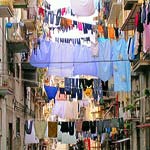 Napoli
Napoli
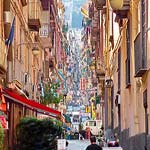 Napoli
Napoli
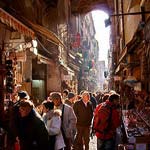 Napoli, S.Gregorio Armeno
Napoli, S.Gregorio Armeno
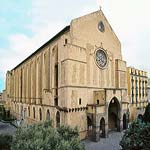 Napoli, Basilica di S. Chiara
Napoli, Basilica di S. Chiara
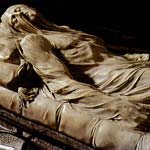 Napoli, Cristo Velato
Napoli, Cristo Velato
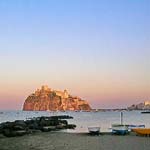 Ischia
Ischia
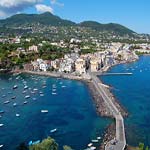 Ischia
Ischia
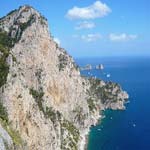 Capri
Capri
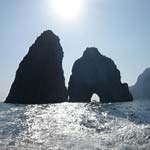 Capri
Capri
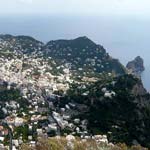 Anacapri
Anacapri
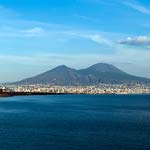 Vesuvio da Napoli
Vesuvio da Napoli
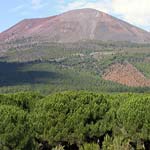 Vesuvio
Vesuvio
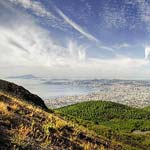 Panorama dal Vesuvio
Panorama dal Vesuvio
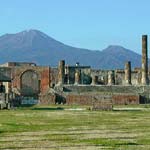 Pompei
Pompei
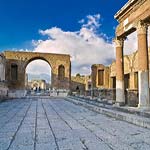 Pompei
Pompei
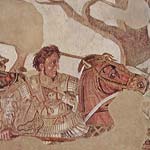 Pompei
Pompei
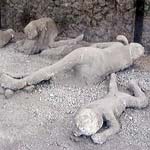 Pompei
Pompei
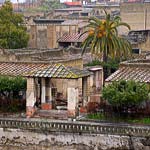 Ercolano
Ercolano
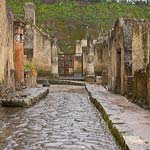 Ercolano
Ercolano
In accordance with the law of 27-06-1985 nr.332, all Italian citizens, under the age of 18 and over the age of 60 have free admission to monuments, museums, galleries and state owned archeological excavations.
The same condition applies to foreigner visitors.
A valid document of recognition is to be show at the entrance of the monument.


